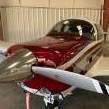Camguard Cylinder Glazing?
-
Members Online
- Planegary
- ArtVandelay
- DonMuncy
- Parker_Woodruff
- Tommooney
- EricJ
- FlyLateNLife
- Glen Davis
- AndreiC
- MikeOH
- KSMooniac
- N305EP
- Brian2034
- mooneygirl
- redbaron1982
- Buckeyechuck
- Paul Thomas
- jordanjms
- GeeBee
- warren.huisman
- Splinters
- Scottknoll
- larryb
- Ron McBride
- cliffy
- toto
- wood_fly
- Schllc
- Marc_B
- PeytonM
- raymondscott0321
- Meshach
- Ibra
- Bartman
- Stealth Mooney
- spaceman39a
- McMooney
- exM20K
- jcolgan
- Nippernaper
- DanM20C
- mitchsm
- Skates97
- Geoaviator
- bhtitle
- Brandt
- takair
- Browncbr1
- Bunti
- Justin Schmidt


Recommended Posts
Join the conversation
You can post now and register later. If you have an account, sign in now to post with your account.